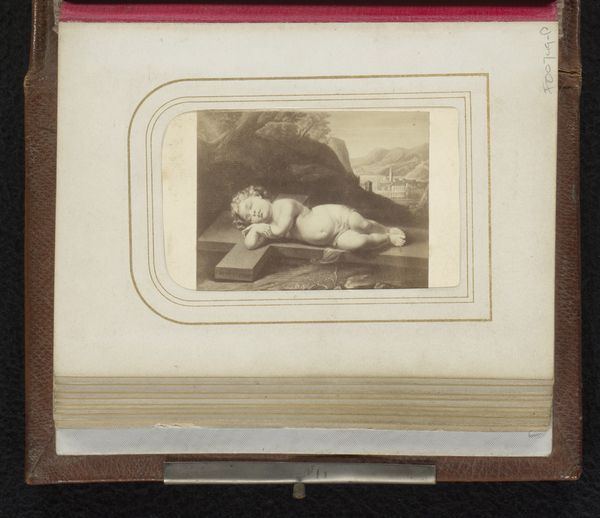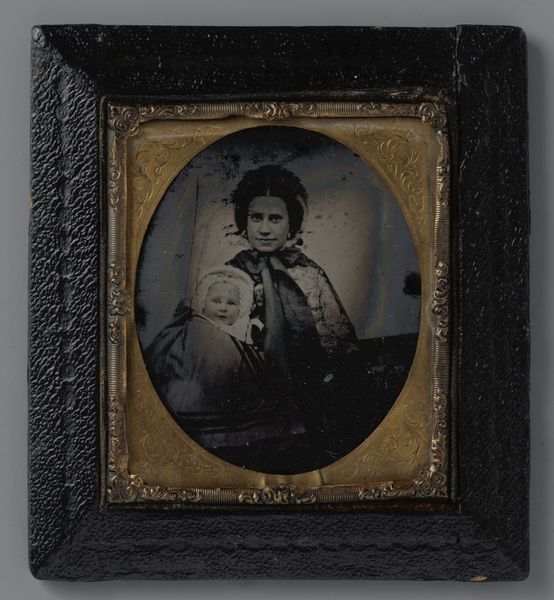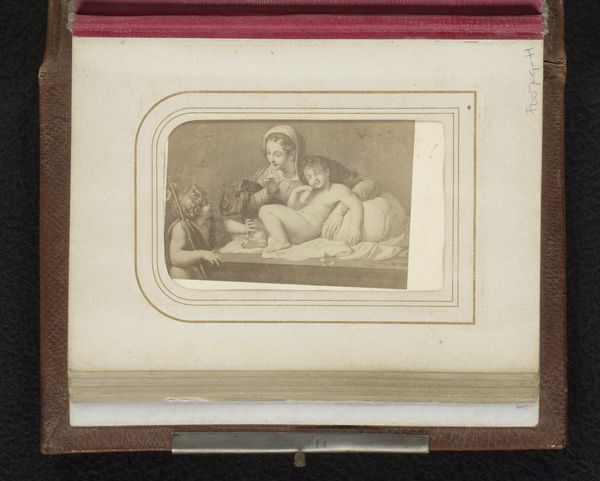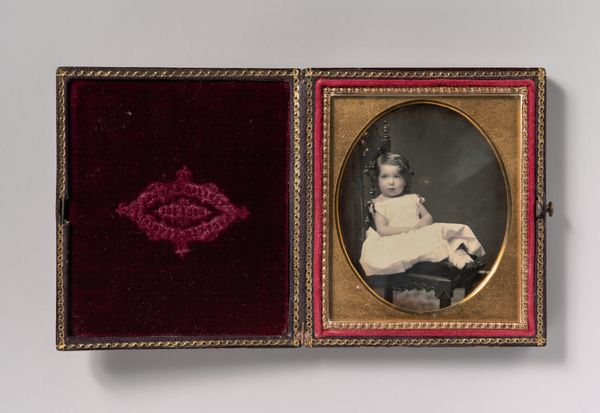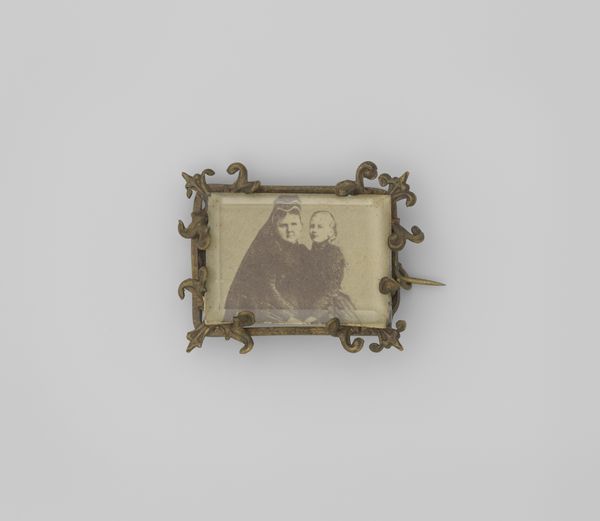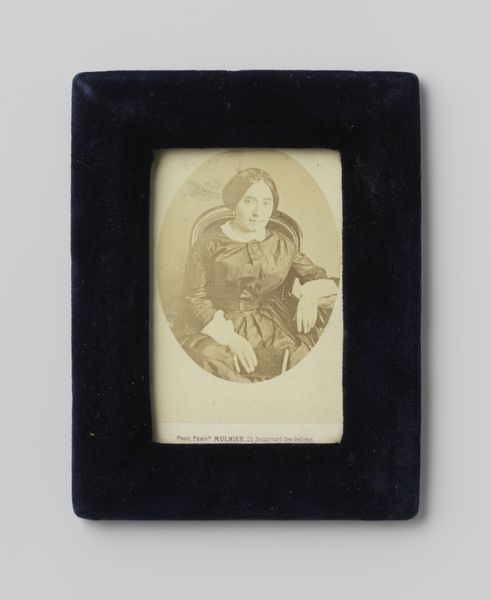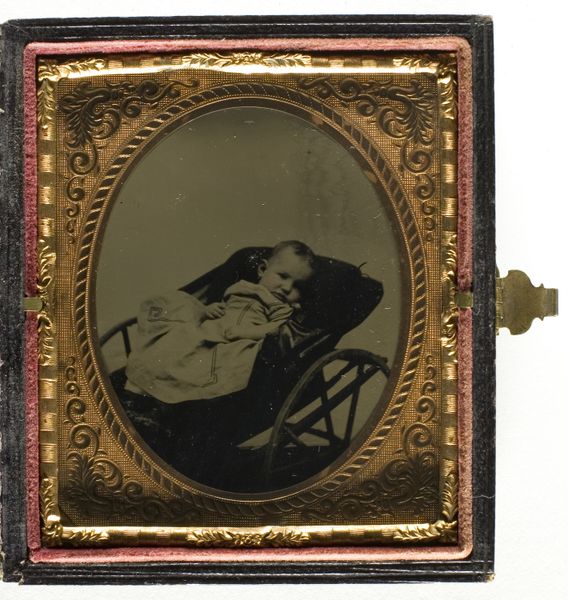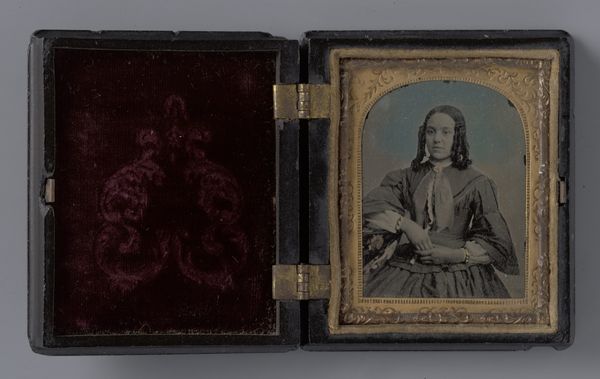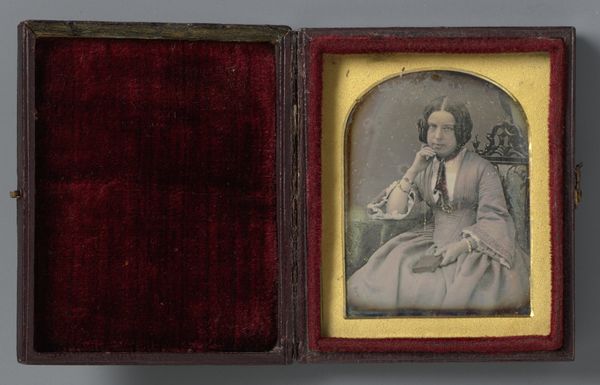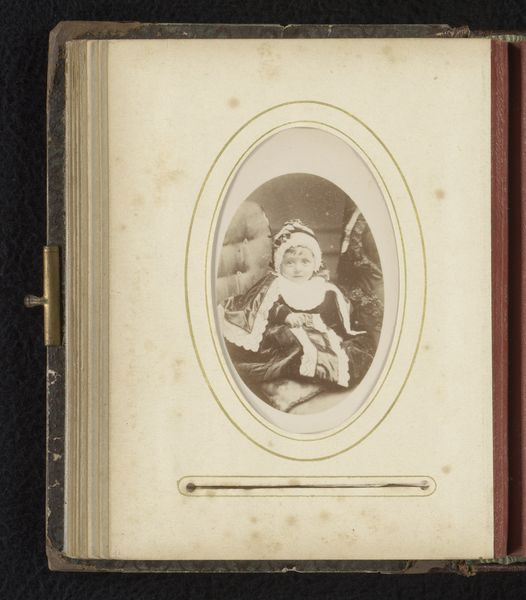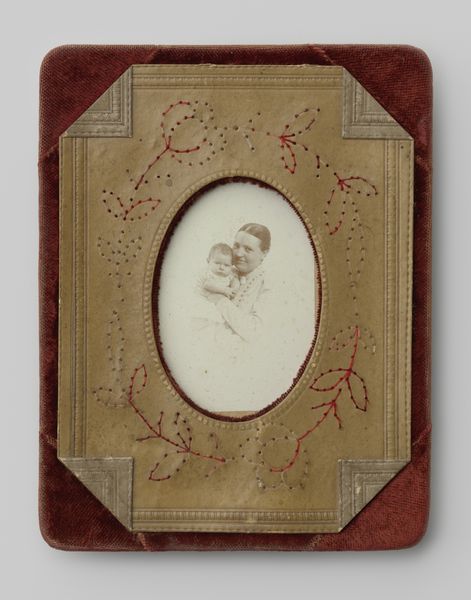![[Portrait of Living Man beside Dead Man] by Louis Dodero](/_next/image?url=https%3A%2F%2Fd2w8kbdekdi1gv.cloudfront.net%2FeyJidWNrZXQiOiAiYXJ0ZXJhLWltYWdlcy1idWNrZXQiLCAia2V5IjogImFydHdvcmtzL2VlOWIwZjc5LTQ3MDctNDJlYS05MjI2LWEwOWRlZDM1ZmVlNS9lZTliMGY3OS00NzA3LTQyZWEtOTIyNi1hMDlkZWQzNWZlZTVfZnVsbC5qcGciLCAiZWRpdHMiOiB7InJlc2l6ZSI6IHsid2lkdGgiOiAxOTIwLCAiaGVpZ2h0IjogMTkyMCwgImZpdCI6ICJpbnNpZGUifX19&w=3840&q=75)
daguerreotype, photography
#
portrait
#
death
#
sculpture
#
daguerreotype
#
photography
#
momento-mori
#
romanticism
#
realism
Dimensions: Image: 2 5/8 × 3 7/16 in. (6.7 × 8.7 cm)
Copyright: Public Domain
Louis Dodero created this daguerreotype, a "Portrait of Living Man beside Dead Man," sometime between 1840 and 1880, likely in France. During this era, photography emerged as a powerful tool for memorializing the dead. This image exemplifies the 19th-century cultural practice of post-mortem photography. The stark contrast between the living and the dead—one alert, the other peaceful—offers a poignant reflection on mortality. The image's creation and consumption were shaped by the cultural norms and social conditions of the time, particularly grief and remembrance. To understand this daguerreotype fully, we need to delve into the history of photography, 19th-century funerary practices, and the social role of portraiture. This artwork provides a lens through which to examine shifting attitudes towards death and mourning in the modern era. Its meaning lies in the intersection of art, technology, and social context.
Comments
No comments
Be the first to comment and join the conversation on the ultimate creative platform.

